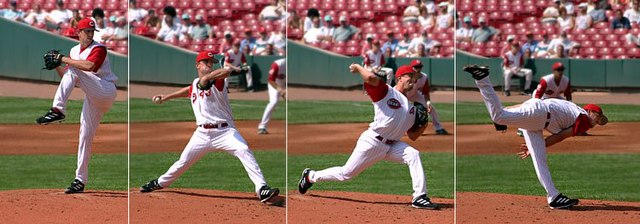Baseball personnel have cheated by deliberately violating or circumventing the game's rules to gain an unfair advantage against an opponent. Examples of cheating include doctoring the ball, doctoring bats, electronic sign stealing, and the use of performance-enhancing substances. Other actions, such as fielders attempting to mislead baserunners about the location of the ball, are considered gamesmanship and are not in violation of the rules.
Newspaper article from 1920 lamenting the doctoring of baseballs
Interior of the Metrodome, where airflow was reportedly manipulated to favor the Minnesota Twins
Throughout the history of baseball, the rules have frequently changed as the game continues to evolve. A few common rules most professional leagues have in common is that four balls is a base on balls, three strikes is a strikeout, and three outs end a half-inning.
Cover of Official Base Ball Rules, 1921 edition, used by the American League and National League
A batter follows through after swinging at a pitched ball.
The typical motion of a right-handed pitcher
1906 World Series, infielders playing "in" for the expected bunt and the possible play at the plate with the bases loaded






